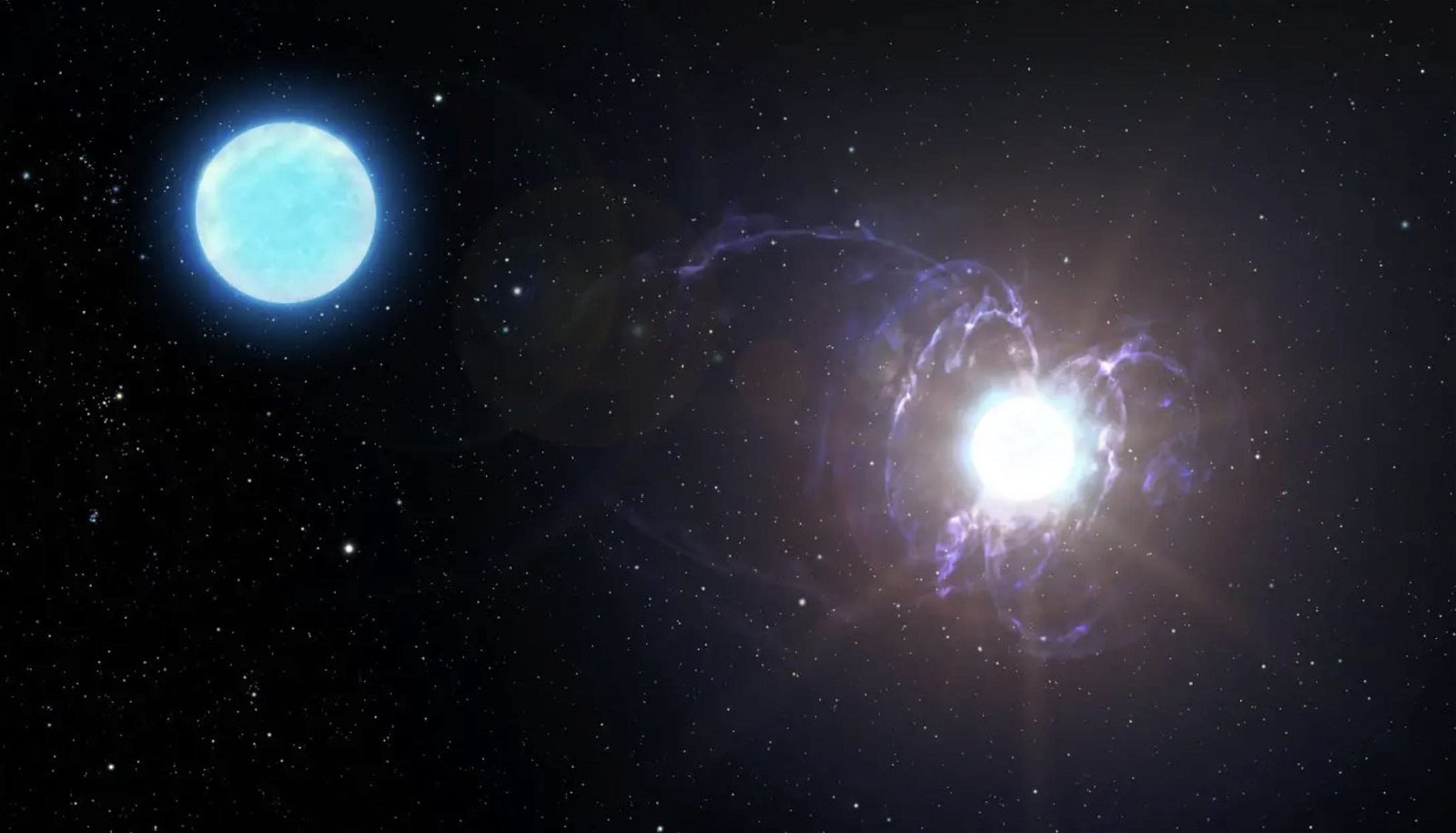Researchers have discovered a new stellar object with “highly unusual” characteristics, which they say possesses the most powerful magnetic field anywhere in the known universe.
Astronomers involved with the discovery characterize the object as a massive magnetic helium star and say the discovery could help astronomers understand the origins of magnetars.
Magnetars are a type of neutron star with extremely strong magnetic fields. Neutron stars are formed when a very large star finally explodes, resulting in a supernova. The incredibly compacted core of the remnant star that is left behind is believed to represent the densest matter anywhere in the universe.
Magnetars produce the strongest magnetic fields that are known to exist, although how they manage to do so remains a mystery to astronomers.
Now, observations made by researchers with the National Science Foundation’s NOIRLab could help astronomers unravel new details about how magnetars are believed to form.
The team reports in a paper recently published in Science that a strange, massive star they have discovered possesses what may be the most powerful magnetic field ever associated with such a celestial body, marking the discovery of an all-new variety of astronomical objects.
An effort that combined data collected from telescopes that included the Canada-France-Hawai‘i Telescope (CFHT) on Maunakea and other observatories from around the world helped the research team identify the huge helium star, which possesses an equally massive magnetic footprint.
The team identifies the object as a variant of what is known as a Wolf-Rayet star, which may represent a phase in its evolution toward becoming a magnetar.
“For the first time, a strong magnetic field was discovered in a massive helium star,” said NOIRLab researcher André-Nicolas Chené in a statement.
“Our study suggests that this helium star will end its life as a magnetar.”
Chené and the team says spectroscopic observations helped them detect the magnetic field produced by the unusual object, which at 43,000 gauss is believed to be the most powerful magnetic field known to have been detected.
Additional details about the object’s mass and age were gleaned from observations of its interaction with nearby celestial objects, the team said, adding that the star might have formed because of a merger between a pair of smaller stars long ago.
Now the team is considering whether the formation of magnetars throughout the universe may rely on similar processes.
“This is a very specific scenario, and it raises the question of how many magnetars come from similar systems and how many come from other types of systems,” Chené said in a statement.
Chené adds that it was previously believed that stars that may eventually become magnetars would likely arise from the most massive stars, which may not be the case after all.
“What this research shows us is that stars that are much less massive can still become a magnetar, if the conditions are just right,” Chené adds.
Chené and the team’s research was detailed in a paper, “A massive helium star with a sufficiently strong magnetic field to form a magnetar,” which appeared in Science on August 17, 2023.
Micah Hanks is the Editor-in-Chief and Co-Founder of The Debrief. He can be reached by email at micah@thedebrief.org. Follow his work at micahhanks.com and on Twitter: @MicahHanks.

